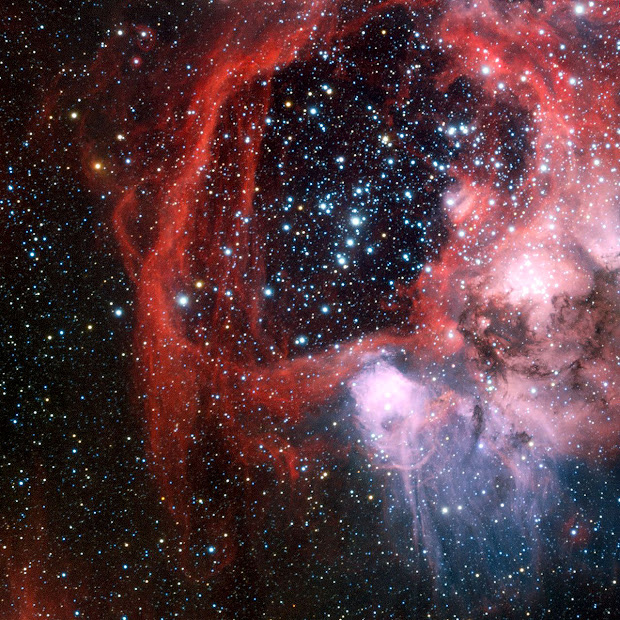Click on the image for full resolution (1.7 MB)
ESO's Very Large Telescope has been used to obtain this view of the nebula LHA 120-N 44 (N 44 for short) surrounding the star cluster NGC 1929. Lying within the Large Magellanic Cloud, a satellite galaxy of our own Milky Way, this region of star formation features a colossal superbubble of material expanding outwards due to the influence of the cluster of young stars at its heart that sculpts the interstellar landscape and drives forward the nebula's evolution. Hot young stars in NGC 1929 are emitting intense ultraviolet light and causing the gas to glow. This effect highlights the aptly-named superbubble, a vast shell of material around 325 by 250 light-years across. For comparison, the nearest star to our Sun is just over 4 light-years distant. The N 44 superbubble has been produced by the combination of two processes. Firstly, stellar winds - streams of charged particles from the very hot and massive stars in the central cluster - cleared out the central region. Then massive cluster stars exploded as supernovae creating shockwaves and pushing the gas out further to form the glowing bubble. Although the superbubble is shaped by destructive forces, new stars are forming around the edges where the gas is being compressed. Like recycling on a cosmic scale, this next generation of stars will breathe fresh life into NGC 1929.
The full resolution image weighs 1.7 MB, so please be (a little) patient when downloading!
Credit: ESO/Manu Mejias
Image enhancement: Jean-Baptiste Faure










0 comment(s):
Post a Comment